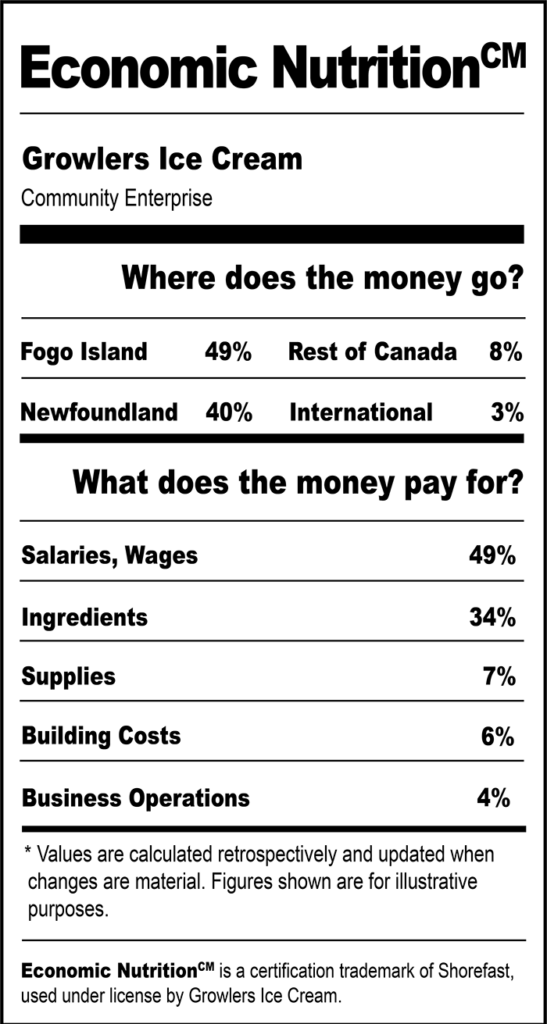Every day we make choices about how we spend our money. Most people want to make buying decisions that have a positive impact on their community and the planet. Likewise, many businesses want to showcase how their sourcing and employment principles have this same positive impact.

Economic Nutrition is a new way to encourage businesses and consumers to invest in the future of local economies.
Price alone is not telling the full story.
Information about “where the money goes” is rarely available at the point of purchase. Due to the complexity of modern supply networks and ownership structures, it can be difficult to define your dollar’s impact along the input chain.
What is Economic Nutrition?
Transform your business with Economic Nutrition – get started today!
Nutrition labels for food were introduced in 1973. Burkey Belser’s accessible, transparent design revolutionized the way people eat and understand their agency as consumers of food products. The Economic Nutrition Certification Mark is modeled after food nutrition labels as an illustrative tool to show the financial information behind any product or service, equipping consumers with the knowledge they need to understand how their purchase impacts the economic health of communities.
The Certification Mark shows any consumer what their money pays for by displaying the percentage of every dollar spent by an organization to produce the certified product. Expenses like labour, materials, or marketing – even the geographic distribution of every dollar spent, is made visible by the Economic Nutrition Certification Mark.
Why does it matter?
Enabling businesses with tools to show financial information beyond the price provides customers with the knowledge they need to make informed decisions. Economic Nutrition empowers consumers to choose products and businesses that support local economies so that every purchase becomes a meaningful investment.
How do I read an Economic Nutrition Label?
The information along the top of the label includes the business name and type of business structure, giving a frame of reference for the information being shared. The labels are derived from a business’s total operations costs for a fiscal year.
Information is then broken into two parts:
Where does the money go?
This section identifies where the money used to source inputs lands geographically across four categories: local, regional, national, and international. “Local” represents a Municipal area (city, town, or community) with “Regional” representing the respective Province of source (for Canadian users). “National” represents the respective Country and all costs beyond this level are grouped as “International.”
What does the money pay for?
This section breaks down the percentage of the organization’s costs by operating category. The category descriptions (such as salaries & wages, property costs, ingredients, etc.) are designed to be easily understood by a wide range of readers referencing multiple industries, products, and services for consistency when referencing.

Interested in Using Economic Nutrition?
We’re looking for forward-thinking businesses eager to integrate Economic Nutrition into their practices. Whether you’re ready to showcase your procurement practices or just beginning your journey, we offer tailored pathways to help businesses better serve the places we live.
Economic Nutrition emerged on Fogo Island as a transparency tool for Shorefast’s community enterprises. As an initiative of the Shorefast Institute for Place-Based Economies, Economic Nutrition is one of many programs re-shaping the economy around place.